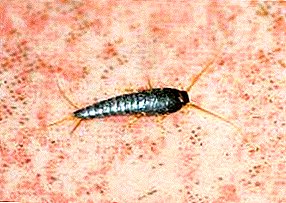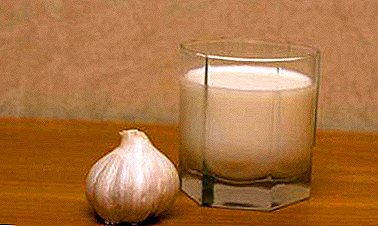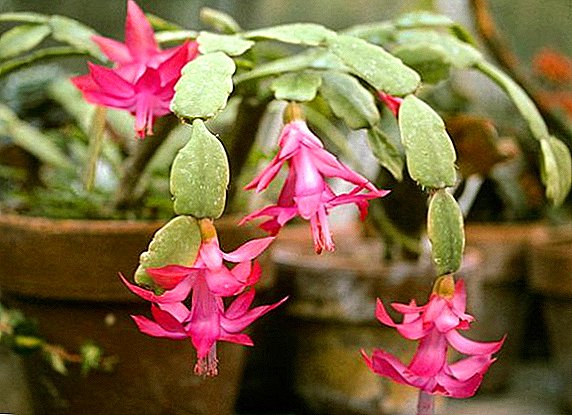 Zinnia or Zinnia, a beautiful flower. Mexico is considered the birthplace of the Zinnia from the Astrovich family. This is a perennial plant, but our gardeners grow it as an annual. In the people these flowers are known as majors.
Zinnia or Zinnia, a beautiful flower. Mexico is considered the birthplace of the Zinnia from the Astrovich family. This is a perennial plant, but our gardeners grow it as an annual. In the people these flowers are known as majors.
One of the advantages of zinnia is that it grows both in the garden and at home.
If you take care of her properly, she will delight you for a long time with her bright terry inflorescences.
Types of Zinnia
The main varieties of zinnia are elegant and narrow-leaved. Later, these types of them brought two more species: flower and linearis.
Distinguish this plant and the height of the stem:
- high - more than a meter
- medium - from 40 to 50 cm,
- as well as dwarf - 10-35 cm.
 Graceful zinnia is also distinguished by inflorescences: georherious, fantasies, chrysanthemum flowers, gayardiotsvetnye, pomponnye (liliputovye), scabiosa flowers and cactus.
Graceful zinnia is also distinguished by inflorescences: georherious, fantasies, chrysanthemum flowers, gayardiotsvetnye, pomponnye (liliputovye), scabiosa flowers and cactus.
The most popular are dahlia (inflorescences are thick and terry, the arrangement of the petals resembles shingles) and pompon (the lower petals bend down and the flower becomes like a pompon).
Gardener note: Petunia, planting and care.
Flowers enotera - a magnificent decoration of the garden //rusfermer.net/sad/tsvetochnyj-sad/vyrashhivanie-tsvetov/enotera-mnogoletnyaya-posadka-i-uhod-za-rasteniem.html.
Find out here the healing properties of periwinkle.
Features care for flowers
Zinnia - this is an unpretentious heat-loving plant. She loves bright light, but is afraid of drafts and frosts. Therefore, you must carefully choose a place for its landing.
This plant is drought-resistant and great for urban flower beds, where flowers do not often indulge with an abundance of water. But such a feature does not mean that you can relax and not plant flowers at all. To inflorescences were more succulent, it is necessary to regularly add water just under the root of the plant.
 And if you water the inflorescences themselves, they will dry out and lose their attractive appearance. Another very important to loosen the soil. This will ensure proper air circulation and help protect the plant from disease.
And if you water the inflorescences themselves, they will dry out and lose their attractive appearance. Another very important to loosen the soil. This will ensure proper air circulation and help protect the plant from disease.
If you find time to feed your flowers, they will thank you with a lush bloom. For the first time, the soil is fed with humus or compost before planting sprouts.
The second dressing is done one month after disembarkation, and the third - during the setting of the buds. Further, such procedures can be carried out every month. The main thing is not to overdo it with nitrogen, so that the stems do not rot in wet weather.
If in the middle of summer flowering weakens - it is necessary to pruning. In addition, you need to constantly remove wilted inflorescences in order to preserve the beautiful look of your flower bed and prolong flowering.
Useful article for all lovers of flowers: snapdragons, planting and care.
Learn all about calendula and its application //rusfermer.net/sad/tsvetochnyj-sad/vyrashhivanie-tsvetov/poleznye-svojstva-kalenduly-i-sposoby-eyovyvyrashhivaniya.html.
Growing Zinnia
Propagated by seed. They can be sown on seedlings in mid-April, or in open ground in May. If you sow flowers right on the bed, the flowering period will come a little later.
 If you decide to sow flowers in open ground, then you need to wait until the end of the frost. When the soil is warm enough, you need to dig and fertilize it. Next, we make a small furrow (about 3 cm) and pour the landing site. After that, you can safely sow the seeds.
If you decide to sow flowers in open ground, then you need to wait until the end of the frost. When the soil is warm enough, you need to dig and fertilize it. Next, we make a small furrow (about 3 cm) and pour the landing site. After that, you can safely sow the seeds.
The distance between the future sprouts should be at least 15-20 cm. If you sow more densely, a transplant will be required.
After the seeds are covered with soil, the bed should be watered again. At this landing of flowers is over. If the weather is favorable, the first shoots can be expected in 4-7 days.
If you sowed flowers for seedlings or very thick, you need to transplant them. Do it better in early June. Zinnias are very good at transplanting. The main thing is not to touch the root and transplant together with the ground in which the stem grew. Young sprouts even more than adult flowers, afraid of the cold. Therefore, when the temperature drops, they must be covered.
Read on our site features planting daffodils.
Learn how to plant dahlias //rusfermer.net/sad/tsvetochnyj-sad/vyrashhivanie-tsvetov/georgina-koroleva-sredi-tsvetov-na-osennem-balu.html.
Fighting Zinnia diseases and pests
The most common disease is powdery mildew (greyish white bloom). It may appear in cold and wet weather. To avoid this disease can and should be. To do this, take care of good air circulation and regular watering at the root. In addition to plaque, zinnia can be affected by fusarium, root rot and dry stem rot.
Of the pests Zinnia is afraid of aphids, snails, spider mites and slugs.
Use colors
High varieties are well suited for flower beds and rabatok, and undersized most often grown in pots and balcony boxes. Low-growing zinnias are best planted in a group, so they will look better.
 Use flowers and bouquets. It is best to cut them when the flower has opened by three quarters. Zinnias stand well in water and retain their brightness for a long time.
Use flowers and bouquets. It is best to cut them when the flower has opened by three quarters. Zinnias stand well in water and retain their brightness for a long time.
By the way, in order to betray the sluggish bouquet of freshness, you just need to update the cut and put it in hot water.
To prolong the joy of blooming undersized zinnias, before cooling, you can dig them up with a clod of earth, plant them in a pot and leave them on a bright window.


 Gardener note: Petunia, planting and care.
Gardener note: Petunia, planting and care. Useful article for all lovers of flowers: snapdragons, planting and care.
Useful article for all lovers of flowers: snapdragons, planting and care. Read on our site features planting daffodils.
Read on our site features planting daffodils.









